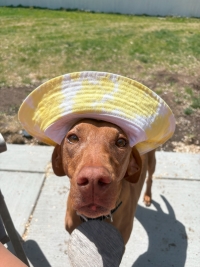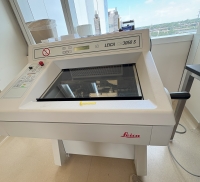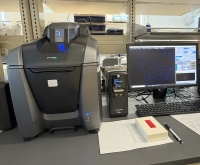 Thought #1: Home Sweet Home
Thought #1: Home Sweet Home Being a born-and-raised Denverite, I have a lot of pride in my city (even the Rockies). Working at the University of Colorado Medical Campus Anschutz, specifically the newly constructed VA hospital, is an incredible opportunity. One of the best parts? I get to drive home every night to my own bed and sleep with my puppy.
<--Puppy dog Teli enjoying catching rays on the weekend.
Leading up to my first week in Dr. Amy Keller and Dr. Nate Wlodarchak’s labs, I was spending everyday thinking about what the summer would look like. Would they expect me to have a plan? Experiments? Hypothesis? I didn’t even know what to pack for lunch!
Day one arrived, and they quickly put me at ease, explaining that this week would be about me getting comfortable within their labs, learning about what their projects looked like, and how to not accidentally blow everything up (safety matters).
Dr. Wlodarchak introduced to me about how stubborn tuberculosis bacteria was to kill and that new drugs hadn’t been developed since the 60’s, while Dr. Keller showed me her research on diabetes in rats and how fat tissue surrounding blood vessels could be the key to improving vascular health and mobility.
While what I am doing wasn’t fully answered, the puzzle pieces were being put into place.

 Every inch of the lab space is covered in high tech machinery, chemicals, microscopes, and more. Each time my eyes would set on something I had never seen before, I immediately found myself asking “what does this do?” Notable machine number one I like to call the “Slice and Dice” (see image right). It's actually a Licea CM3050 S, which prepares frozen tissues for microscopic examination by slicing it very, very thinly. I got to use the “Slice and Dice” to prepare slides of aortic arch tissue from rats to analyze collagen. These slides were analyzed using my second piece of fancy machinery, the Keyence (see image on the left), which is a fancy microscope/slide reader that uses lasers to analyze what is on your slide. We used specific antibodies to “tag” collagen on the aortic arch slides I had prepared. These antibodies had a specific fluorescence on them to show where the collagen was located.
Every inch of the lab space is covered in high tech machinery, chemicals, microscopes, and more. Each time my eyes would set on something I had never seen before, I immediately found myself asking “what does this do?” Notable machine number one I like to call the “Slice and Dice” (see image right). It's actually a Licea CM3050 S, which prepares frozen tissues for microscopic examination by slicing it very, very thinly. I got to use the “Slice and Dice” to prepare slides of aortic arch tissue from rats to analyze collagen. These slides were analyzed using my second piece of fancy machinery, the Keyence (see image on the left), which is a fancy microscope/slide reader that uses lasers to analyze what is on your slide. We used specific antibodies to “tag” collagen on the aortic arch slides I had prepared. These antibodies had a specific fluorescence on them to show where the collagen was located.
After spending the week following Dr. Keller’s research assistants Garret and Melissa, it was time to ask the big question. What do I want to know?
Dr. Keller instructed me to do some research on what I'm interested in, using her previously published work as a back bone. Felt easy enough. Spoiler alert: it was not. I went down the rabbit hole of possibilities and found about 1000 different things to study. With this, I forgot a crucial detail of summer research: I wasn’t on the block plan anymore. This means that the experimental process will take longer than 18 days.
Dr.Keller and Dr. Wlodarchak stepped in with some much needed guidance and a starting point for my research. They suggested that I screen botanical compounds for key properties that aid their research. For Dr.Keller, this is bioactivities that have to do with anti-inflammatory or antioxidant properties, and for Dr.Wlodarchak, it is antimicrobial properties. With that clear direction, I was given my first official task: do some basic research over the weekend. I needed to find out which botanical compounds have these bioactivities, what’s already been studied, and how I might connect them to the questions these two labs are trying to answer.
Weekends at home are full of my favorite things—family, coaching, and softball. Coaching softball is basically my second job. This weekend I had just one game with my 11–12 rec league softball team, which didn’t quite feel like enough. So I made up for it by catching a Rockies game with family and friends. They didn’t win, but I scored a cool new shirt.
 A Rockies game in my sick new purple shirt with the best people.
A Rockies game in my sick new purple shirt with the best people. It was the perfect way to recharge before diving into another week of research.